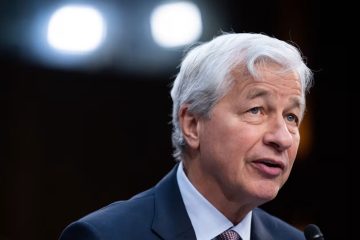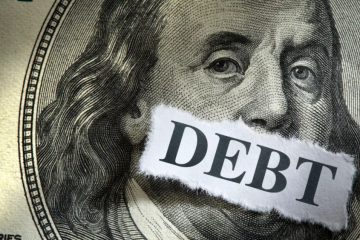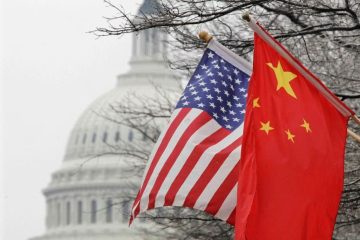The Fed intended and banks anticipate deposits to leave the system

Depositors fled to the perceived safety of the titans of finance following a pair of bank failures last month. A raft of earnings this week will show just how costly the run was for everyone else. Small and midsize U.S. banks lost hundreds of billions of dollars in recent weeks to their bigger peers and to money-market funds offering higher yields. That is likely to force many of them to increase the interest rates they are paying to avoid losing more customers.
The extent of the damage will become clearer when dozens of regional banks including M&T Bank Corp., MTB 0.03%increase; green up pointing triangle U.S. Bancorp and Citizens Financial Group Inc. begin to report first-quarter results. Investors, analysts and central bankers are likely to pore over the results looking for clues about the health of the financial system and the broader economy. “It’s maybe the most critical, sensitive quarter they’re ever going to report in,” said Mike Brauneis, managing director and global financial services industry leader at Protiviti, a management-consulting firm.
Some banks are already jacking up the interest rates they pay savers, with the biggest increases coming from banks with a high percentage of deposits that exceed the Federal Deposit Corp.’s $250,000 insurance cap or whose customers are concentrated in a few industries. Silicon Valley Bank and Signature Bank collapsed after uninsured depositors fled en masse. Los Angeles-based PacWest Bancorp, a lender with a lot of startup customers, had offered as much as 5.5% for a shorter-term CD in recent weeks. A CD offered by Merchants Bank of Indiana has an introductory yield of about 5.4% that can move higher if the Federal Reserve’s benchmark rate does. Mortgage lenders, a casualty of rising rates, make up a good chunk of customers of the bank’s parent company.
Some banks appear to be trying to “get ahead of any potential situation” and “make sure they have the liquidity if difficulty should arise,” said Ken Tumin, founder and editor of DepositAccounts.com. “Things have started to change over the past month.” Deposit rates on standard savings accounts have inched up over the past year. The average rate paid on deposits at banks and credit unions was 0.37% in March, according to the FDIC, compared with 0.06% a year earlier.
But rates have moved faster on deposit accounts designed to keep money parked for longer periods. The average yield for online savings accounts rose to about 3.75% in March, according to indexes from Deposits Online LLC, compared with 0.5% a year ago. Online one-year certificates of deposits on average offered an annual percentage yield of nearly 4.75%, up from less than 1% in 2022.
Even America’s biggest banks are paying more to keep customers from taking their business elsewhere. Citigroup Inc. paid 2.72% on interest-bearing deposits in the first quarter, up from 2.1% at the end of 2022. JPMorgan Chase & Co. paid 1.85%, up from 1.37%, while Wells Fargo & Co. paid 1.22%, up from 0.70%. Still, those increases didn’t dent the banks’ net interest income, the money they make on loans minus what they pay on deposits. At JPMorgan, America’s biggest bank, net interest income in the first quarter rose 49% to a record $20.71 billion.
Regional banks that lost customers in the turmoil aren’t likely to fare as well, especially if they were forced to replace low-cost deposits with more expensive loans from the Fed’s discount window or an emergency facility it created to help banks meet withdrawals. The Fed has raised interest rates at the fastest pace since the 1980s to curb inflation, driving some customers with big account balances to ditch banks in search of better yields. That shift picked up steam after SVB and Signature failed. “The Fed intended and banks anticipated deposits to leave the system,” said Gerard Cassidy, an analyst at RBC Capital Markets. “It is not to be unexpected, but this accentuated it. No doubt about it.”
Total deposits at banks in the U.S. fell to $17.4 trillion in March, Fed data shows, a $312 billion decline from the start of the month. A year earlier, banks had north of $18 trillion in deposits. Regional banks have taken the biggest hits to deposits since the turmoil began. The 25 largest U.S. banks gained $18 billion in deposits last month, while the ones below that size lost $212 billion. There are signs that midsize banks have started to feel the pressure to raise yields. Synchrony Financial and Ally Financial both have recently offered a 5% annual percentage yield on CDs that don’t have any minimum balance requirements.
Synchrony prices products “to be competitive in the market with the desire to attract new customers,” a spokeswoman said. Ally assesses market conditions and other factors to determine rates and can keep them lower because it doesn’t have physical branches, a spokesman said.
When the Fed began its anti-inflation campaign last year, banks were able to charge more for loans and keep the interest they pay on deposits relatively low because pandemic stimulus had flooded them with deposits. That was nine rate increases and a banking crisis ago.









